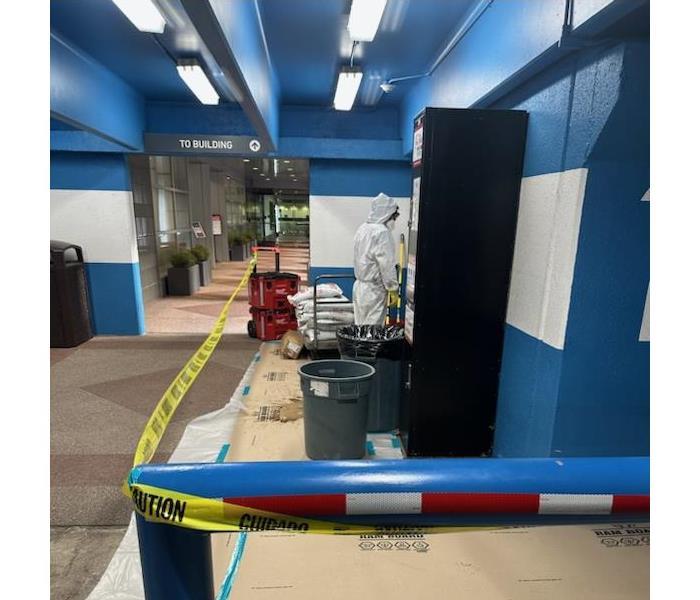Effective Strategies for Removing Mold in a Shower
7/10/2024 (Permalink)
Mold growth in showers is a common problem faced by many homeowners. The warm, moist environment of a shower provides the perfect breeding ground for mold spores to thrive and proliferate. Fortunately, there are several effective strategies for removing mold in a shower and preventing its recurrence. In this blog post, we'll explore these strategies and provide practical tips for keeping your shower clean and mold-free.
Identifying Mold in a Shower:
Before discussing how to remove mold in a shower, it's essential to identify its presence. Mold in a shower typically appears as black, green, or brown spots on grout, caulking, tile surfaces, or shower curtains. Additionally, musty odors and a slimy or fuzzy texture may indicate mold growth.
Cleaning Mold with Household Solutions
Vinegar:
Vinegar is a natural and effective cleaner that can help remove mold from shower surfaces. Simply fill a spray bottle with white vinegar and spray it directly onto the affected areas. Let the vinegar sit for several hours or overnight, then scrub the mold away with a brush or sponge. Rinse the area thoroughly with water afterward.
Baking Soda:
Baking soda is another household ingredient that can help eliminate mold in a shower. Create a paste by mixing baking soda with water, then apply it to the moldy surfaces. Allow the paste to sit for about 30 minutes before scrubbing the mold away with a brush or sponge. Rinse the area thoroughly with water to remove any residue.
Hydrogen Peroxide:
Hydrogen peroxide is a powerful antifungal agent that can effectively kill mold spores in a shower. Pour hydrogen peroxide into a spray bottle and apply it directly to the moldy areas. Allow it to sit for 10-15 minutes, then scrub the mold away with a brush or sponge. Rinse the area thoroughly with water afterward.
Using Commercial Mold Cleaners
Mold and Mildew Cleaners:
There are numerous commercial mold and mildew cleaners available on the market that are specifically formulated to remove mold in showers. These cleaners often contain ingredients such as bleach, ammonia, or hydrogen peroxide, which can effectively kill mold spores and prevent their regrowth. Follow the manufacturer's instructions carefully when using these products.
Shower Cleaners with Mold Prevention:
Some shower cleaners are formulated not only to remove existing mold but also to prevent its recurrence. These cleaners often contain ingredients that create a protective barrier on shower surfaces, making it more difficult for mold spores to take hold. Regular use of these cleaners can help keep your shower clean and mold-free.
Preventing Mold Regrowth:
After removing mold from a shower, it's essential to take steps to prevent its regrowth. Keep the shower area well-ventilated by using exhaust fans or opening windows to reduce moisture buildup. Additionally, regularly clean and dry shower surfaces to prevent mold-friendly conditions from developing.
Removing mold in a shower requires diligence and proper cleaning techniques. Whether using household solutions or commercial cleaners, it's essential to thoroughly clean and disinfect shower surfaces to eliminate mold spores effectively. By incorporating preventive measures into your cleaning routine, you can keep your shower clean and mold-free for years to come. If you encounter severe or recurring mold issues in your shower, consider seeking professional assistance from a restoration company like SERVPRO® for thorough mold remediation.

 24/7 Emergency Service
24/7 Emergency Service
